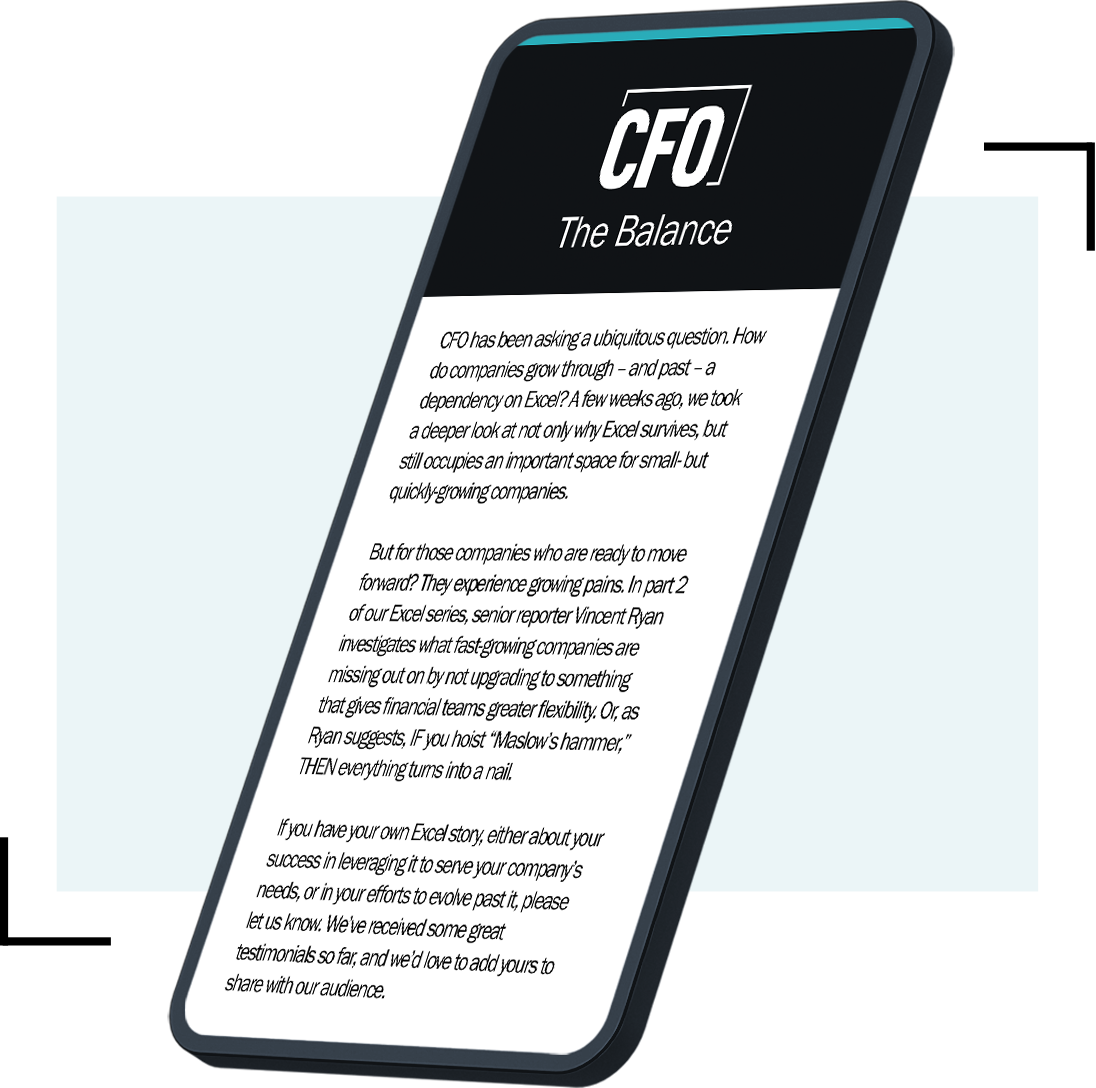The Latest
-
72% of CFOs say healthcare costs the most unpredictable expense: Report
Both self-funded and fully-funded plans have predictability and cost issues, according to a Mercer report.
-
Q&A
Ogilvy Global CFO Stacey Ryan-Cornelius: Leadership through creativity
“I try to approach my career ambitiously, I always have a two or three-year plan no matter who I’m with or what role I'm in.”
-
Opinion
CFO-CHRO partnership: 6 talent acquisition metrics to drive ROI
Knowing what talent acquisition metrics to track can have a significant impact on a company’s financial performance.
-

 The image by Gage Skidmor is licensed under CC BY-SA 2.0
The image by Gage Skidmor is licensed under CC BY-SA 2.0
Trump Media fires BF Borgers after auditor trouble, hires Semple, Marchal & Cooper
The company replaced their old auditing firm, BF Borgers, on the same day charges were brought up against them by the SEC.
-
CFO event recap: Networking, AI, and employee satisfaction — Trial Balance
CFOs at last week's Next Gen finance event discussed best practices, navigating risks and new technologies.
-
Why I never want to be a CFO again: Former CleanSpark CFO Lori Love
“I always give 150% in everything I do, and I couldn’t do that anymore as a CFO.”
-
How CFOs can keep restless accountants on staff
“When employees leave, it is typically because of the aggregated effects of a number of factors.”
-
CFOs On the Move: Week ending May 3
New CFOs at Manchester United, PODS, Cognex, A+E Networks, and more.
-
Stripe unbundles financial products as payments processing industry shifts
The payments processing company adjusted its strategy which, according to QED Investors Partner Laura Bock, “aligns with what we are seeing in the fintech landscape at large — businesses increasingly demanding flexibility.”
-
53% of CFOs have adopted or are adopting ESG principles: Report
“CFOs are bracing for a year in which ESG risks are not just a boardroom buzzword, but a critical business reality.”
-
Only 37% of CFOs have a positive short-term economic outlook: Report
However, the majority of CFOs say the the U.S. economy’s long-term economic outlook is positive.
-
Chemours CFO Jonathan Lock resigns following code of ethics violations
Lock will forfeit his severance but retain company stock options that were vested prior to resignation.
-
Opinion
5 CFO priorities to navigate unsteady market conditions
Here’s how CFOs can deliver profitable business outcomes despite economic uncertainty.
-
Raymond of New Jersey CFO in court over Williams Sonoma contract fraud
“Greed can easily overtake one’s ability to be content. Mr. Nardone abused his position as the Chief Financial Officer and conspired with others to secure favorable contracts only to end up in court.”
-
Jamie Dimon and NerdWallet’s CEO talk inflation and access to capital: Trial Balance
This week, Dimon discusses the changes of a soft landing, the Fed meets for its latest interest rate decision, and April’s job report is released.
-
28% of companies involved in M&A lack key people retention plans
Forty-four percent of acquiring companies selected at least half of C-suite executives to sign retention agreements.
-
CFOs On the Move: Week ending April 26
New CFOs at Dave & Buster’s, Nordson, Clover Health, Simpro, and more.
-
Q&A
Mastering the IPO: Lacework CFO Andrew Casey
“Recent listings suggest that the IPO window may be opening up.”
-
88% of CFOs say FTC noncompete ruling will have no impact on their career trajectory: Poll
Poll findings indicate that CFOs do not see the new FTC noncompete ruling as a threat to retaining top finance talent.
-
The 6 a.m. CFO: How Komprise’s Craig Gomulka starts his day
“I'm a strong believer in the importance of leading by example, meaning, your actions speak louder than your words.”
-
26% of finance leaders expect a dramatic drop in GenAI hype: Poll
Finance leadership’s excitement around AI and its associated automation tools may be dwindling, data from The Daily Balance suggests.
-
FTC to ban noncompetes
The FTC said the rule, expected to take effect as soon as late August, received overwhelming public support during a comment period.
-
4 Keys to improve your M&A playbook, post-acquisition
CFOs should build an M&A playbook based on past lessons learned.
-
35% of employees would take less pay for non-toxic workplace: Report
Nearly half of employees said favoritism is inhibiting their ability for a fair shot at career growth, according to an INTOO survey.
-
5 Time-saving strategies for CFOs to unlock greater potential
CFOs should go above functional expertise to gain real strategic impact.


























